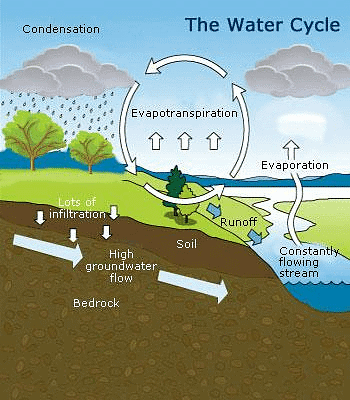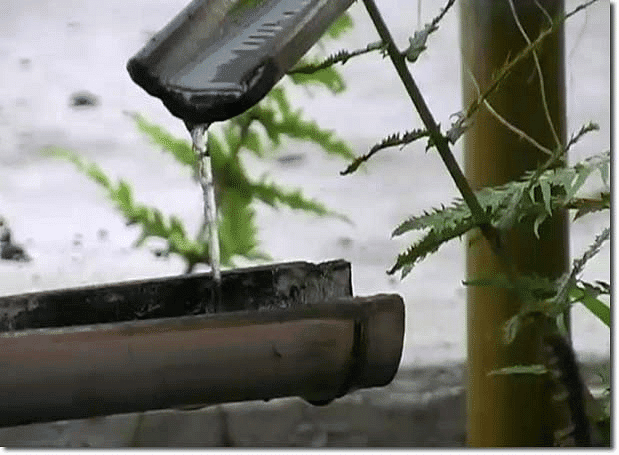Class 10 Geography Chapter 3 Question Answers - Water Resources
Q1: What is hydrological cycle? What is its importance?
Ans: The continuous movement of water on, above and below the surface of earth is known as hydrological cycle. The freshwater is mainly obtained from surface run off and ground water that is continually being renewed and recharged through the hydrological cycle. All water moves within the hydrological cycle ensuring that water is a renewable resource.

Q2: Why should we conserve and manage our water resources? How can we control overexploitation and mismanagement of water resources? State any two points that should be kept in mind for efficient management of water.
Ans: To safeguard against health hazards, ensure food security, and sustain livelihoods, it's crucial to conserve and manage water resources, given the current issues of water scarcity and decreasing freshwater availability. Over-exploitation and mismanagement can be addressed through effective conservation practices, preventing ecosystem degradation and ecological crises. Key strategies include preventing water pollution and adopting integrated water resource management, incorporating water-saving technologies, recycling, reuse, and promoting rainwater harvesting.
Q3: Mention a negative effect of irrigation. How can irrigation transform the social landscape?
Ans: Irrigation has changed the cropping pattern of many regions with farmers shifting to the cultivation of water-intensive and commercial crops. This has great ecological consequences. It leads to waterlogging and consequent salinisation of the soil. This is a negative effect of irrigation. As rich farmers have better access to irrigation they have earned more money due to the production of commercial crops. On the other hand, the landless poor who couldn’t avail of its benefit became poorer. Thus, irrigation has transformed the social landscape by increasing the social gap between rich landowners and the landless poor farmers.
Q4: Give examples of traditional water harvesting systems prevalent in various parts of India.
Ans: Traditional water harvesting methods in India include diversion channels like 'guls' and 'kuls' in the Western Himalayas for hilly agriculture. Meghalaya employs bamboo-drip irrigation in its hilly areas. Bengal uses inundation channels for floodplain agriculture. Rajasthan practices rainfed storage with 'Khadins' in Jaisalmer and 'Johads' elsewhere. Rooftop rainwater harvesting, common in Rajasthan, involves underground 'tankas' for drinking water storage in semi-arid regions like Bikaner, Phalodi, and Barmer.

Q5: What is rainwater harvesting? State the objectives of rainwater harvesting.
Ans: Rainwater harvesting is an efficient method of water conservation and management. The technique of collecting and storing rainwater directly or recharging it into the ground through artificial means to improve groundwater storage is called rainwater harvesting. Conversion of agricultural fields into rainfed storage structures locally known as ‘Khadins’ and ‘Johads’ in Rajasthan
Rooftop rainwater harvesting to store drinking water in tanks or sumps for direct usage and to recharge and use groundwater for household purposes through abandoned wells or check dams, or through hand pumps during the dry season.The objectives of rainwater harvesting are:
- To prevent wastage and pollution of the monsoon rains.
- To reduce runoff and control the flooding of roads.
- To recharge and improve the quality of groundwater storage and raise the water table.
- To meet the demands of domestic water requirements during the dry season.
- To solve the problem of drinking water shortage especially in regions receiving less rainfall.

Q6: Why has the water shortage problem aggravated in post-independence India?
Ans: Post-independence India has experienced intensive industrialization and urbanization, straining freshwater resources. Industries, urban centers, and modern lifestyles demand extensive water for production, cooling, and power, exacerbating the depletion of sources. In addition, agricultural progress has further intensified water scarcity. The collective impact of these factors underscores a pressing issue of water shortage in post-independence India.
Q7: How has agriculture aggravated the problem of water scarcity in India Explain.
Ans:
(i) Water is a basic input in agriculture. It is used for irrigation.
(ii) HYV seeds needs more water as compared to traditional seeds.
(iii) Commercialisation of agriculture has also lead to withdrawal of groundwater at a large scale.
(iv) Overuse of groundwater is another problem associated with agriculture. The water table has lowered in many parts of India due to its overuse.
Q8: Is it possible that an area or region may have ample water resources but is still facing water scarcity Explain with the help of three relevant examples.
Ans:
Yes, it is possible that an area or region may have ample water resources but is still facing water scarcity. Most of our cities are facing this problem.
(i) In most of our cities there is no shortage of water but the water is unfit for consumption.
(ii) Most of our cities are in the banks of rivers, but rivers have been turned into toxic streams.
(iii) The ever increasing population, industries and vehicles has made matter worse by exerting pressure on existing freshwater resources.
Q9: How does an increasing number of industries exert pressure on existing freshwater resources
Ans:
(i) Industries use water as coolant, raw material, solvent, etc.
(ii) Industries release harmful chemicals which contaminates water.
(iii) Most of the Indian rivers are polluted due to toxic chemicals which are released by industries.
Q10: What are dams? How do these help to conserve and manage water?
Ans:
A dam is a barrier across flowing water that obstructs, directs or retards the flow often creating a reservoir, lake or impoundment.
(i) Dams were traditionally built to impound rivers and rainwater that could be used later to irrigate agricultural fields.
(ii) Dams are also source of perennial canals.
|
95 videos|815 docs|79 tests
|
FAQs on Class 10 Geography Chapter 3 Question Answers - Water Resources
| 1. What are the main sources of water in our environment? |  |
| 2. What is the importance of water conservation? |  |
| 3. How does pollution affect water resources? |  |
| 4. What are some methods to save water at home? |  |
| 5. What role do plants play in the water cycle? |  |

















